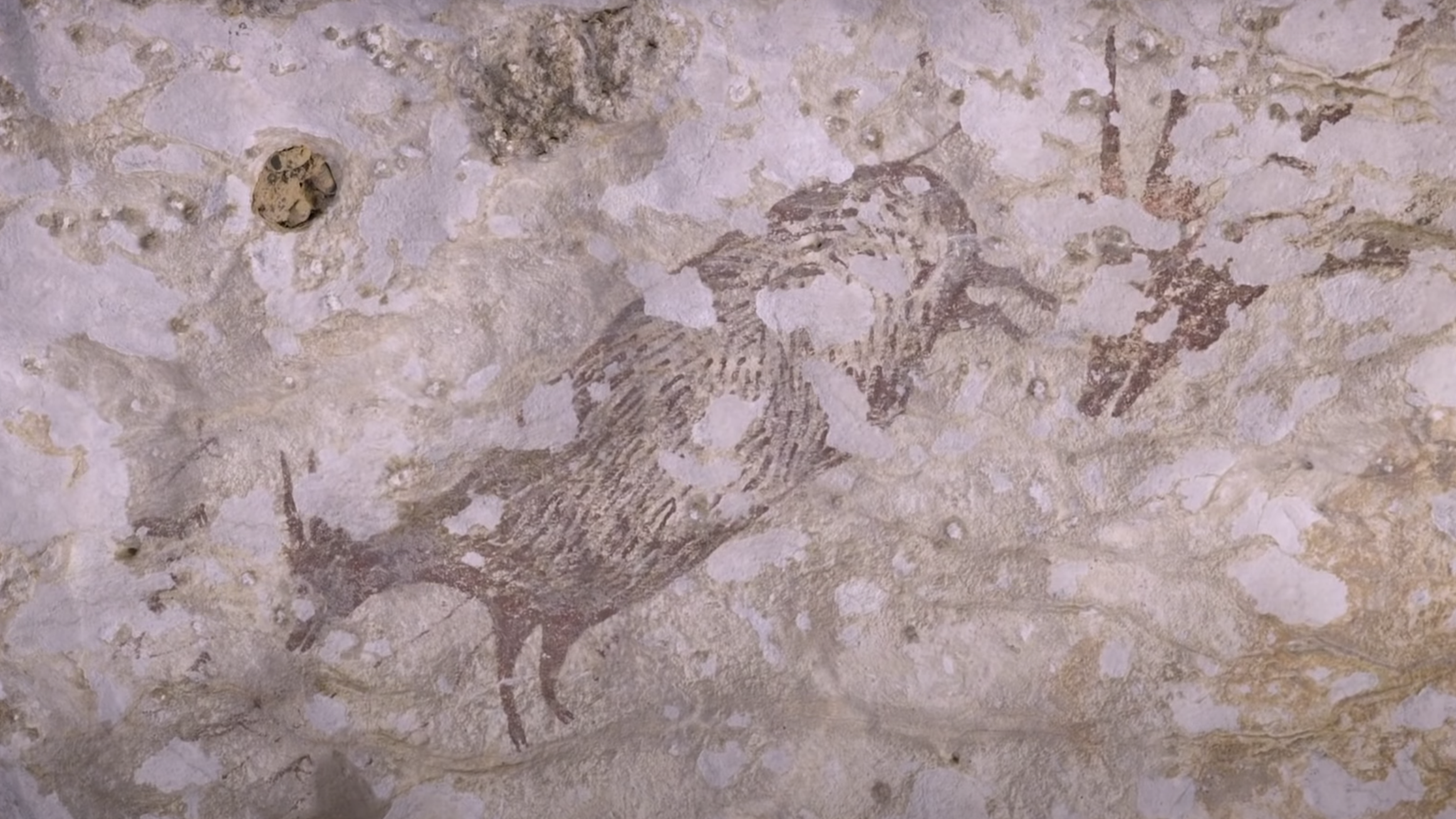
As the full-scope of what we stand to lose to climate change continues to come into fruition, primitive art has now come into view. Scientists only recently discovered the oldest cave drawings known to man in Sulawesi—an island in Indonesia—and they now see the artifacts “disappearing before [their] eyes.”
Researchers at Australia’s Griffith University recently published a study through Scientific Reports paint a picture of time inevitably running out for these expansive cave drawings.
The oldest artwork, featuring three warty, rotund pigs, surrounded by handprints, dates back over 45,000 years. An increase in the formation of salt crystals rigorously degrade the limestone cave wall, causing the art to chip and fall away. Unlike their European counterparts, higher equatorial temperatures threaten Sulawesi’s cave drawings, a reality that’s only becoming more grim.
“I was gobsmacked by how prevalent the destructive salt crystals and their chemistry were on the rock art panels, some of which we know to be more than 40,000 years old,” said study lead Dr. Jillian Huntley. “In my opinion, degradation of this incredible rock art is set to worsen the higher global temperatures climb.”
The pigs are only one of many sketches and illustrations at risk of disappearing completely, and with it, a connection to our ancient ancestors. Other drawings in these caves depict scenes ranging from hunting scenes to supernatural beings. These drawing are an exposition of how Sulawesi people connected to their land and like us with photos, felt the need to document the world around them.
The importance of their existence is not lost on Sulawesian archaeologist and Griffith scholar Basran Burhan.
“Cave art discoveries are revealing more and more about how advanced the cultural lives of the first peoples living in Sulawesi were. Detailed paintings of animals, hand stencils and narrative scenes of great antiquity show that people have been connected to this place for tens of thousands of years,” he said.
9 Comments
There was a terrific article (I don’t remember where, and I can’t provide a citation) where the writer commented that the human figures in ancient artwork tend to be tiny an crude compared to the giant, detailed animals. The article speculated that the earliest humans were just as intelligent as we are, but they lived in a world where megafauna could eat them, so maybe these drawings were a way to cope with their recognition of their own insignificance. It’s kind of a lovely thought.
Well we live in a world where a megafauna became president. Are you sure we’re not dumber than back then?
Do not insult the good name of megafauna.
I think it’s like how big the fish was in any story a fisherman tells you. The invention of photography was a big blow to tall tales.
Erosion: the ULTIMATE canceler.
Since it’s in a cave, you’d think they could do something to control the temp/humidity in there.
Caves are characteristically holey, so climate control would be difficult, although doable. No one’s taking this seriously yet, let alone in Indonesia. They must have extensive photo documentation of the cave art for recreations as a relatively inexpensive go-to if warming continues.
Take a picture it will last longer.